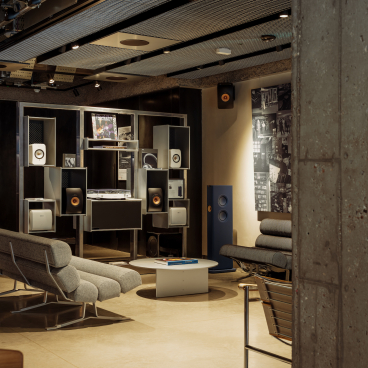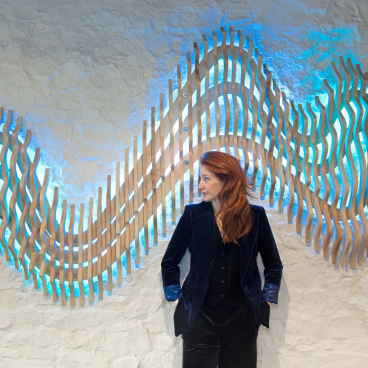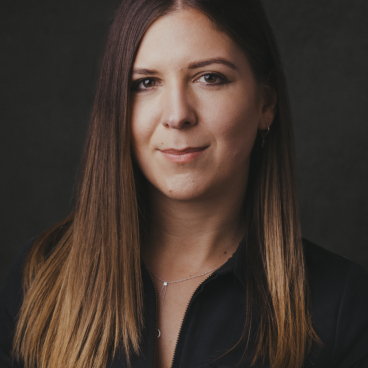Simon Millington, founder, Incognito, on overcoming burnout, avoiding the spotlight, and breaking the rules for good.
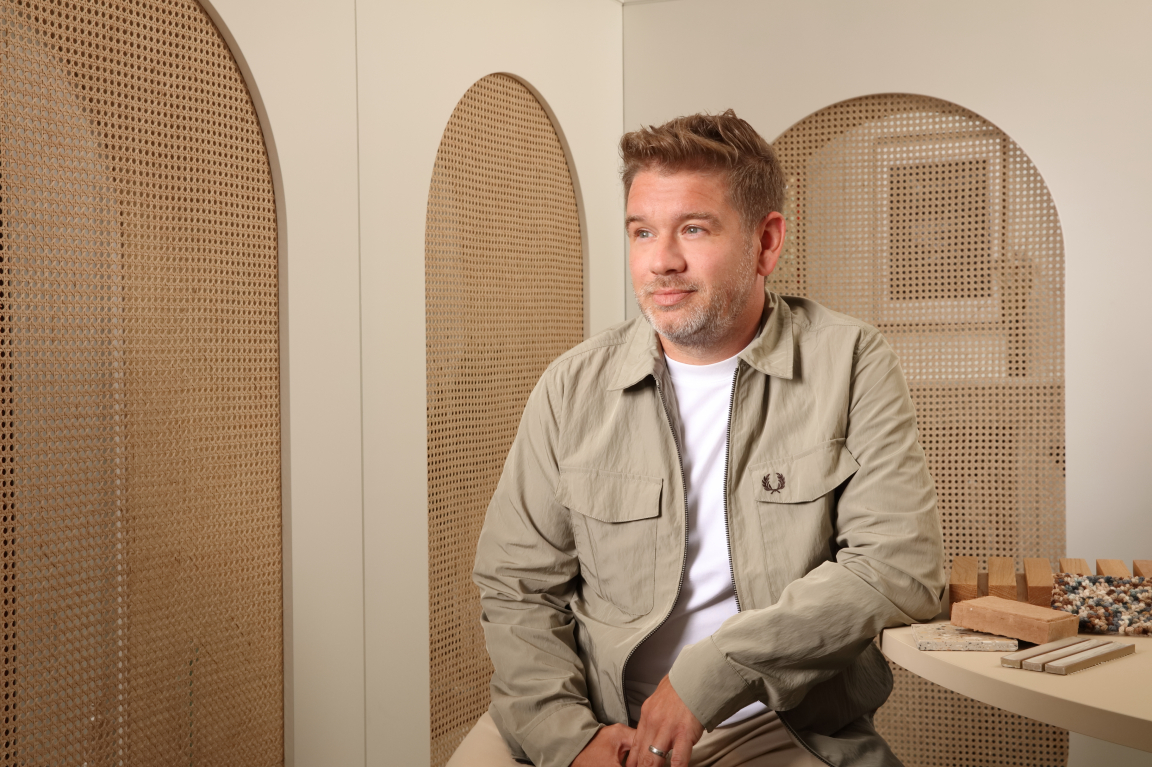
Credit: Pip Rustage
When the interior design industry ‘zigged’, Simon Millington ‘zagged’. Once his share of midnight oil had burnt, drastic change was in order. Incognito is the studio embodiment of that change.
It’s no accident that Simon’s studio is named Incognito. When you visit its website, you will find a cryptic series of messages. And that’s no accident either. Its inception wasn’t accompanied by fanfare. It served a purpose, and a way, for Simon – now entering his 25th year in the industry – to take charge of his future.
With an esteemed, consistent client base of global organisations, a stellar, senior-weighted team of 14, and a new historical home in Manchester’s city centre, though Simon didn’t set out for growth with Incognito, thanks to a wealth of projects for the likes of AstraZeneca, Heinz, Nestle, PZ Cussons, and Xero, rich in both stunning form and optimum function, word has spread, and expansion - perhaps inevitably – has followed. Though it’s on Simon, and fellow director, Howard Powsney’s terms. It’s steady, it’s calm, it’s considered.
Simon isn’t normally one for interviews, but when we suggested a sit down to look through what’s changed since his first foray into design in 1999, he agreed it was a good time to take stock. Here, in a very candid chat, Simon takes us back to the beginning – from secretary pools to social media, Sheppard Robson to setting up SpaceInvader, credit crunches, regulation changes, and burnout. Strap in.
Firstly, Simon, can you please introduce us to Incognito?
“Incognito is pretty much what it says it is. We're not a studio that wants to exist for 'clicks', or be 'shouty' and appeal to a ‘mass market’. We’re interested, primarily, in doing a bloody good job for our clients. And, to do a good job, we need time to focus, and a regular and consistent client base.
“Being in this industry as long as I have, there are studios that have a scorched earth policy. They’ll get a win, and exploit that win for all they can. What I’ve done with my career is base it on long-term relationships. And if you’re basing your studio, service offering, and career on long-term relationships, then it’s important that you service your clients to the best of your ability, and delight them every time. So, they come back for more. And they recommend you to others. That’s the Incognito model.”
When you set up, was growth on the cards?
“The studio wasn't set up to be big. It was created out of necessity for me when I was coming out of a dark spot in my personal and professional life, which left me questioning my ability to design and own my previously founded ID studio - basically I was exhausted and burnt out. Forming Incognito was a result of my mental health leading to me selling my shares in SpaceInvader, and after time in exile requiring a source of income. I wanted to quietly ghost away in the background for contractors, other design studios, large architecture firms – this was all great in terms of building my confidence back up, little by little.
“Now, the studio has a team of 14. It’s grown steadily – deliberately slowly – with a very strong repeat workload, around 85%. Our growth either comes from there, or recommendation. The client base comprises global brands across the tech, science, and nuclear sectors – the likes of which include AstraZeneca and Nestle. As well as local, professional services firms like Hill Dickinson and Brabners, that want a high quality and intelligent space that’s also rich on brand narrative. And we’re now broadening out even further into hotels (Yotel) and some residential work with Cert.
“At the studio, we have a real strength and depth in our senior people, as well as a graduate we are mentoring through her first year in industry. We’re not a pitch team, so the people that rock up at that first meeting are the same ones that will deliver the project and hopefully continue the relationship throughout its life span.
“The reason Incognito exists, isn’t necessarily to hide away – although it originally was about keeping a deliberately low profile. It’s about supporting our team to enable them to be the best they can be while doing a bloody good job for our clients. And the way we do that is by not having an overtly outward looking presence – the kind that leads to clients coming to you without a verified relationship.”
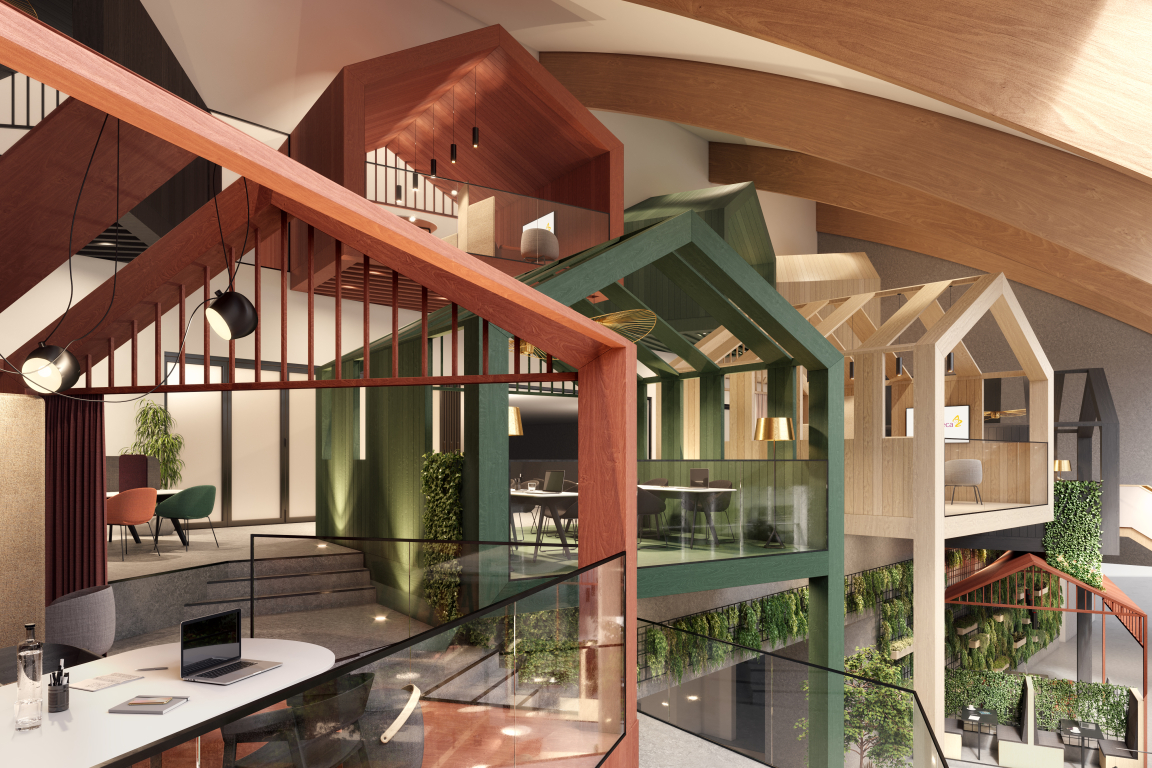
AstraZeneca
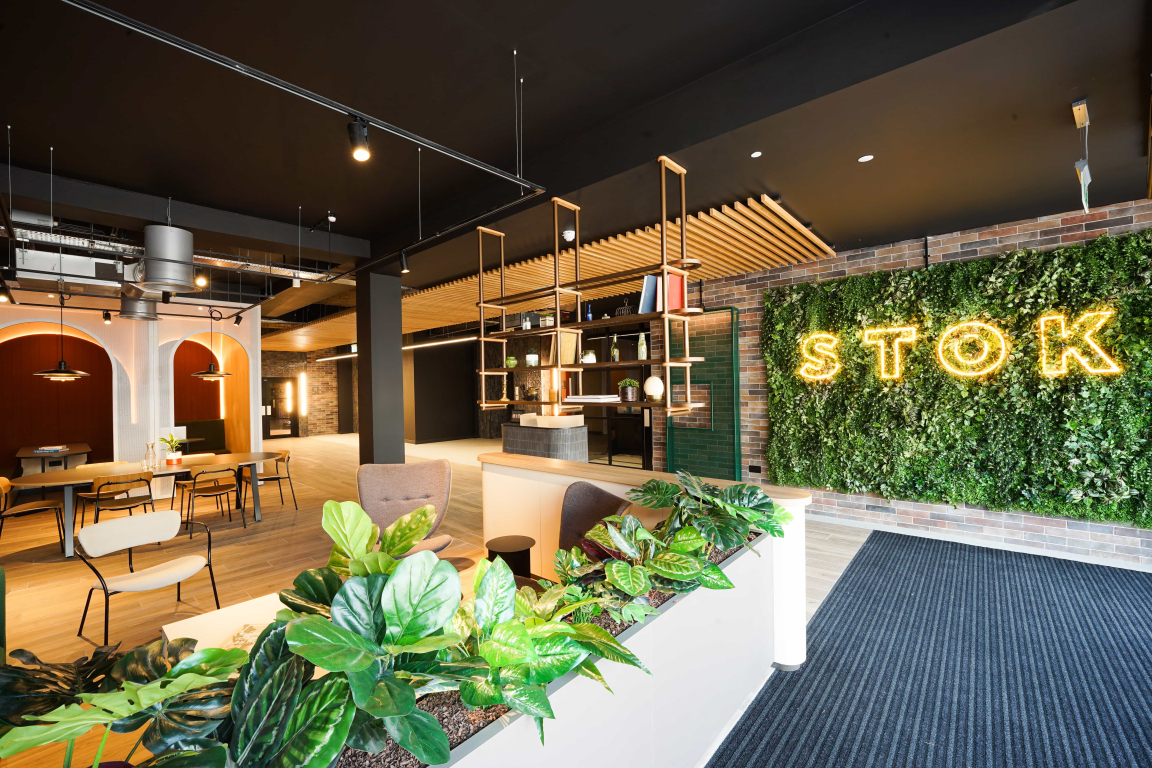
STOK - credit: Skywall Photography
This emphasis on doing a good job by all clearly runs deep?
“There has been a huge thing in our industry – and I’m testament to it – where a regular perception exists that the midnight oil must burn to demonstrate your commitment. It runs with the energy and enthusiasm of an often young workforce who have perhaps not yet met with family or wider adulting pressures. No one is immune, not even at director level. I felt it myself. Burnout happens at precisely the point work wants more from you as your own life pressures come knocking at the same time.
"The way we can control, manage and avoid this at Incognito is to apply the repeat client model, do a great job, and have a static workforce. We will add with strength and talent when the opportunity comes, and the person and time is right, but it’s not, ‘we’ve got a job, we better get a gun for hire on it’. It’s planned growth and we're certainly not afraid to say no if it's not quite the right fit for us.
“At Incognito we are acutely aware that any good designer is likely more on the sensitive side, because we are great listeners, and we’re empathisers, it’s our super power and it’s what we use to translate what a client wants. However, we also suffer from imposter syndrome and therefore have a tendency to go above and beyond in order to please people, and that is what can lead us on the inevitable path to burnout. Our team are no exception, they are incredible designers and hugely conscientious, but they like the fact that we plan our workload, in more detail than most, in order to protect them and our design quality. To us, when someone is working late at night, something has gone wrong, so we address it and learn from it to limit the risk of it happening again.
“All of this fundamentally underpins Incognito – it’s a design studio that cares about its people and the work we do – whether a mundane door schedule or a bobby dazzler of a CGI, it’s got to be the best. Nothing passes through without our fingerprints being on it. And that model, in my opinion, can only go so big. Clients want the DNA – the fingerprints – of the people they bought into all over that job – and you can’t scale that very easily. We’re not producing widgets. I think this is where the industry goes a bit wrong sometimes. The magic is lost along the way."
I think at the point you don’t know what a member of the teams’ youngest dog is called then you’ve probably reached the size where you need to stop.
This will surely resonate with a lot of people – operating on the cusp of burnout, particularly in the creative industries…
“When I’m asked to consider the spark that led to Incognito being created, it was because of that life. I’m lucky that I put enough effort into my early career to be well networked and able to verbalise and visualise an idea, and I set up two businesses on the back of it. Unfortunately I found one model wasn’t working for me personally, and so I zigged while that zagged and realised after many, many months, that I wanted to create an alternative way.
“A lot of people leave the industry. You either proceed as a designer into management, or you leave. My perception of the industry is it chews up excited, enthusiastic individuals who put it all on hold, because design is all encompassing and consuming. It doesn’t matter where you work, we all want our designs to come through to reality and be amazing. Designers are never satisfied and we always want to do better. As a result, it’s very easy to get burnt out."
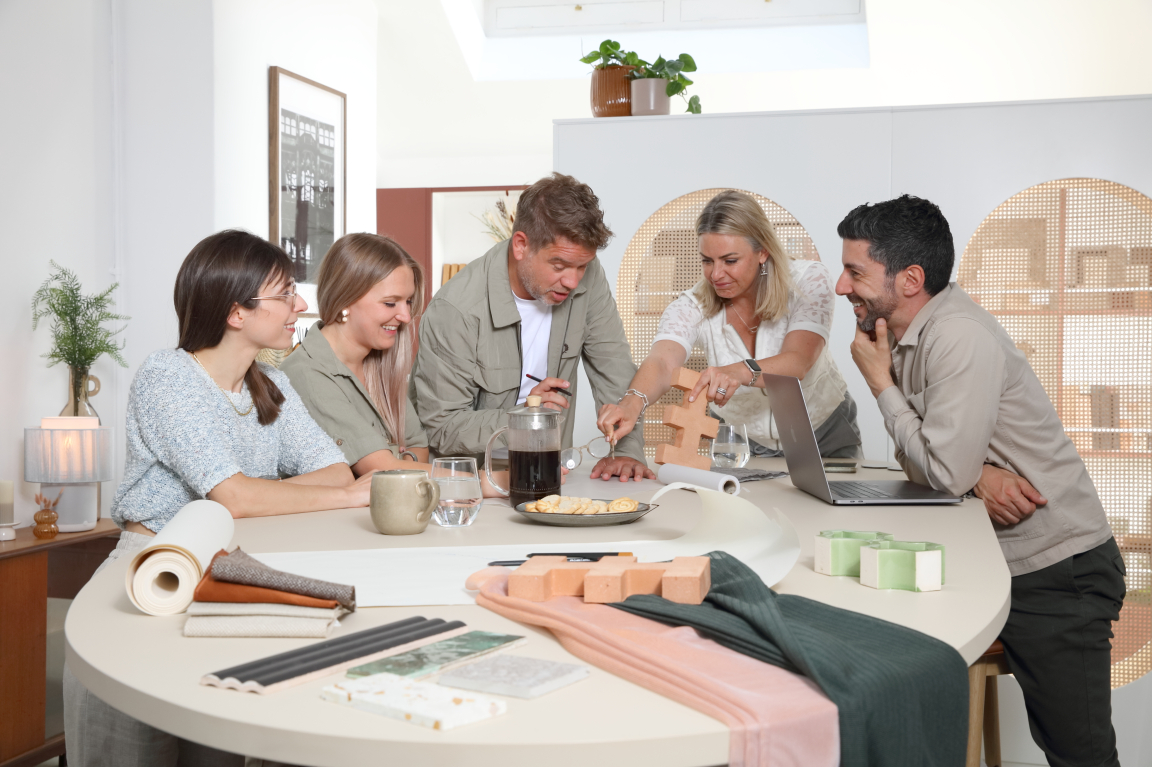
Credit: Pip Rustage
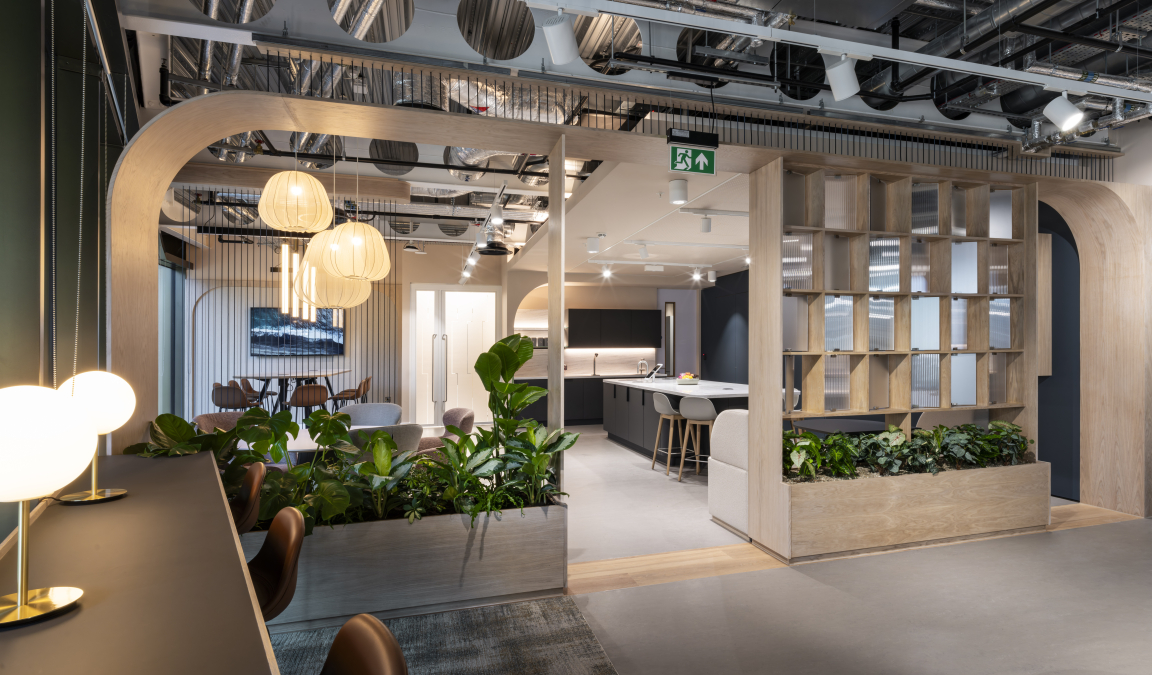
Hill Dickinson - credit: SG Photography
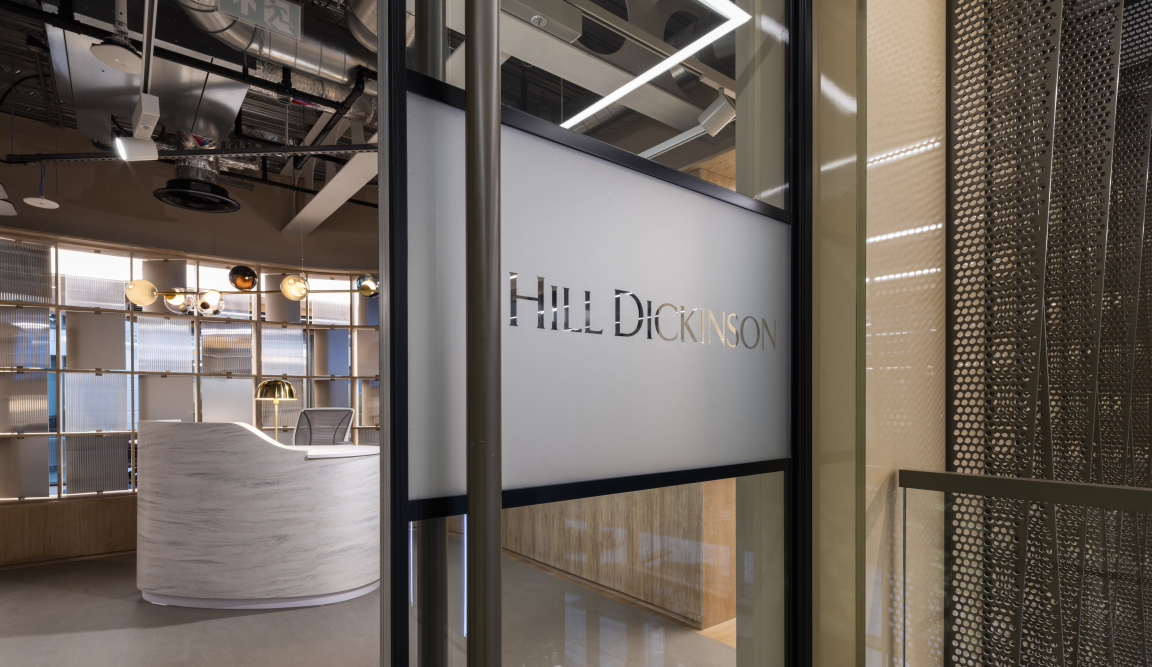
Hill Dickinson - credit: SG Photography
Do you think there’s a perception in the creative industries that because we love what we do, it’s a privilege?
“Oh yes, the perception is that design’s just colouring in, isn’t it?... Reality is we have always held peoples' lives and clients' budgets in our hands. Never more so than now and the regulations are only just catching up to this sobering reality."
It’s a big responsibility – how have the regulation changes impacted the industry?
“It’s going to catch a lot of the industry out. Massively. There’s a lot to understand in terms of our responsibilities and legal obligations now. Far more so than ever in my career. A lot of things have always had the potential to go wrong unless you do your job with extreme care and diligence. As an example, someone will make a change to a specification to save money at the last minute, without that due process going through, which might have a bearing on something else, that delicate ecosystem of the project may fall apart. That’s what the new regulations are all about, ensuring that we all take time to cross the Ts and dot the Is on every aspect of a job and acknowledge the impact small changes can make to the wider scheme.
“However, I have to say that it hasn't exactly been communicated to the industry particularly well and it has genuinely been hard to understand what we need to do. It’s essential, and well-meaning, but we’ve had to be very proactive to research it all and say, we’re going to own this. And we’re going to be the best at it.
“This comes around to the changes that have happened in the industry – it’s grown up so much in terms of the things we have to know about.”
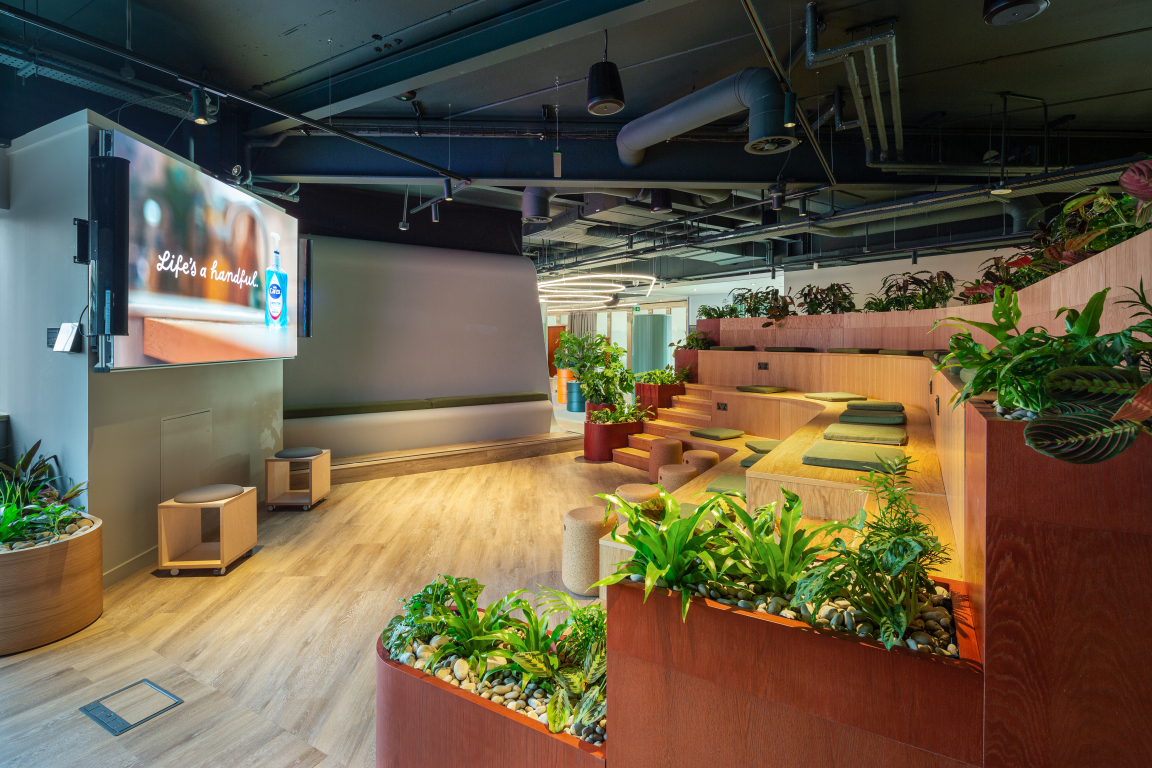
PZ Cussons
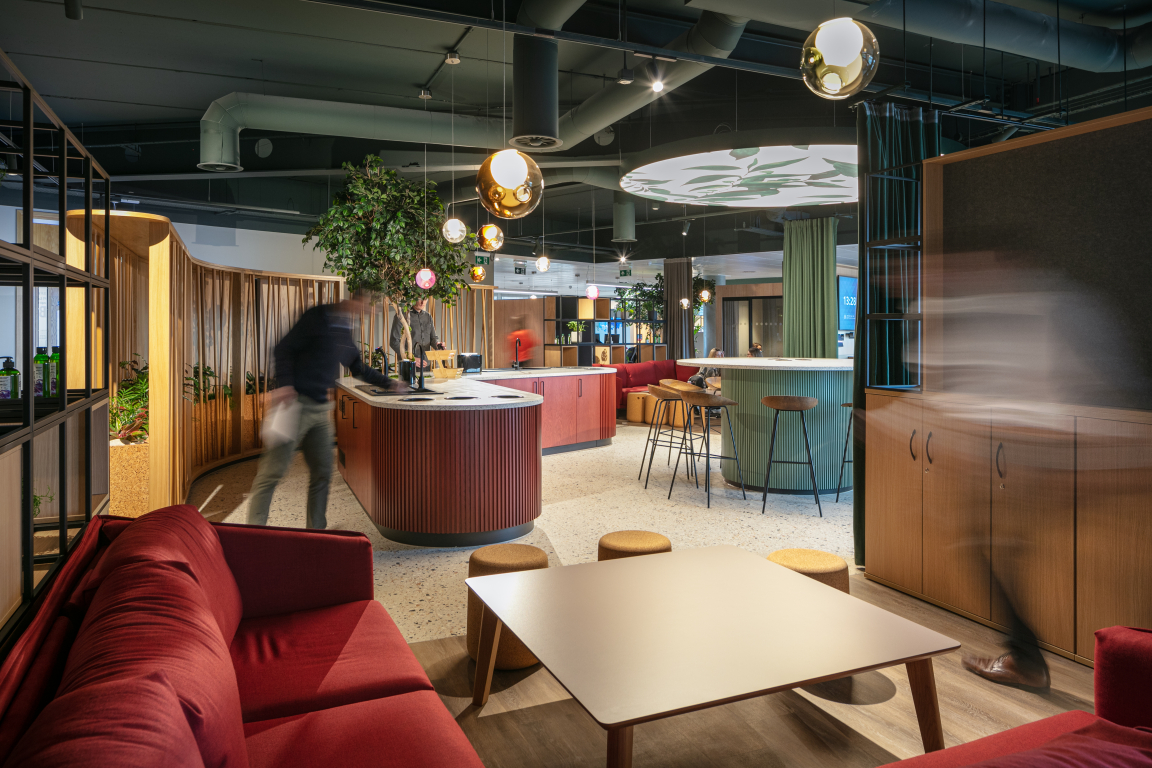
PZ Cussons
You’ve now been in the industry for 25-years – can you tell us about some of the change you’ve seen?
“I started in 1999, and there was a conversation about the Millennium Bug [cue laughing – hindsight is a wonderful thing!].
“My first day at work, I sat in my office with a drawing board, we didn’t have a PC, we had a secretary pool, who would write letters, faxes, and if you had a query on a project, you would receive a letter. This was read by the partner, ticked that they’d read it, then left on your desk at lunchtime to read. And then you had five days to write back. You did this via your secretary – the draft of which was checked by a partner – and then sent out. The industry was slower. And perhaps less pressured – but this might just be me looking back through the eyes of a junior at the time. Back in ’99, we used to all have lunch together as a group, and we’d all return to our desks at 2pm ready for the afternoon. Very regularly we’d go for a pint.
“If you think about how our communications have changed, though, everything is now immediate. We don’t have letters now, we have emails, which are immediate. And it goes into conversational mode rather than it being a structured, thought-out, considered query. But people expect immediate responses without the due time for the job. We’re now extending the acceleration from email to multiple channels such as Whatsapp, where people can see whether you’ve read it. God forbid you don’t reply, because you’ll get chased. All of this has accelerated the background level of stress.
“In addition to this, we now have less time to do our job. Communicating now takes up the majority of time as being the primary function for what you do, rather than actually doing your task. And that’s the visibility of your Teams light on, or your Whatsapp ‘read’ receipts. There’s very little shut off now.
“Build into that regulation changes and the knowledge we’re expected to have, it’s no surprise your seminar programme, and the ‘learning’ events are so well supported, because as an industry we’re expected to know so much more about specialist subject matters – from workplace consultation to material specifications via rules, regulations, and latest trends. I need to know about neurodiversity, so I’m going into psychology. It’s now a weighty field. On top of being a good communicator and doing your job. Not to mention the perceived need to be a social media whizz.
“There’s so much good that happens in the industry though. And do I prefer the one I’m working in now to what I came into? 100%. It’s more enjoyable. If you’d asked me in 1999, do I want to design an office? Well, no, it was all blue carpets and yellow laminate wood. We’ve now got much better in-tune with what a workplace environment can be. Exploring all the senses of it.
"Back as a graduate interior designer entering my first architects' studios, our profession was seen as colourists or ‘cushion plumpers’ – really derogatory terms. I'm proud of my role in turning this perception round. If you think about what’s genuinely exciting in the built environment at the moment, it’s not really architecture. Though there are exceptions. The reason that someone commissions an office building is to house an interior that works to support the business and improve the lives of their workforce. Yes, it's also to make money for the fund, but that only comes if the first objective is met. And that’s exciting – how much it’s progressed in that 25-year journey. Design has accelerated.
“Back in the day, there was a certain level of conservatism and designing for longevity. And now, what we try to do as a studio is give our fair share of a nod and a wink to what’s emerging, and what the key influences will be in the next 5-10-years. But it’s also about making sure we design with this longevity in mind. It won’t be click bait, it won’t tire – it’s responsible and ethical. There is a real push to constantly innovate…"
…to make it Instagrammable? Do you come up against that?
“OMFG, yeh, just make it look cool for the Gram or Office Snap Shots...never mind about what’s it like to work there? There are designers in the industry with incredibly large social followings that do this, and that’s great. But it’s not for us. It needs to stand the test of time and fundamentally reward and work for its inhabitants.”
I don’t want the industry to slow down, and it won’t. But there needs to be some responsibility taken to make sure people are properly supported and the workplace doesn’t reward a toxic culture.
You share the directorship of Incognito with Howard Powsney – how did that partnership come to be?
“We didn’t meet in our first jobs, we were a year or two into our careers when we met during 2004 at Sheppard Robson – he was always a great designer, but more importantly a really solid human. One of the calmest, nicest people you’ll ever meet. And also, quietly, a really good judge of character. We kept in touch, and then he came to join us at SpaceInvader as the third employee we brought in. He did an amazing job with some difficult briefs. And then when I left there, he was feeling the same mid-life struggles, so he reached out to me. I vowed I would never employ anyone again. That I would never grow.
“But he came onboard to work on an exciting project that I was about to turn down because I didn’t have the capacity to work on it on my own. And we did it together. It was the most joyful experience ever working on that – it was fast-paced, but it was doable together. Then it carried on on that trajectory. Howard restored my trust in our industry again.”
The first studio you set up was SpaceInvader – can you tell us about that chapter of your career?
“As with Incognito, the setting up of SpaceInvader came out of necessity. The credit crunch was biting deep, and the team I worked alongside at a big architecture firm were largely made redundant. So I had an idea of how we could generate income, and that was to create a separate studio for interiors.
“I came up with the idea on a beach in Thailand on holiday. I penned the name ‘SpaceInvader’. I worked through the numbers to see if it would work. And I couldn’t see a reason it wouldn’t. At this time, there was very little work going around, and you either needed to control the situation and do something about it. Or let inevitability happen. I realised looking at the business I was in that I needed to innovate. So that’s where SpaceInvader came from.
“Fortunately, through my network, we were able to win our first project, which was designing the UK census facility at Trafford Park. The most far-removed thing you could possibly imagine for an interior designer to be working on. It was all about logistics. Very unsexy. But it was enough to get that business going.
“Little by little SpaceInvader built up. We brought in an incredible team of like-minded, enthusiastic people. When we got to 12-14 people, it was so enjoyable.
“We grew so quick. There weren’t many pure interior design studios around in the north at the time offering an independent, high-end service. Talk about right idea, right place, right time.
“During my tenure there, we had grown to around 35-people, we were just about to open our London studio, and were picking up awards left, right, and centre. On the face of it, everything appeared rosy. But underneath it all, there was a slow, invisible fire in me. I burnt out. I had nothing else to give. I was depressed and exhausted, and I needed not to be in the industry for a while. I made the painful decision to sell my share of the business – to leave it – and then I spent the next 12-18-months working out what I wanted to do.
“In this time, I realised, I’m a one-trick-pony - I can only really do what I do. So that led to the gentle, slow building up of a platform [Incognito] with a really strong base and a level of inertia behind it, so avoiding rapid expansion, and opting for a steady, cool, calm, and collected response to crafting high quality product.
“At SpaceInvader it was an incredibly energetic couple of years - very, very enjoyable. But it had its consequences for me, personally, which still live with me now. The entirety of that team (some of which work alongside of me now at Incognito) were so talented. Looking back, it was like a real ‘super group’ of designers who gave their collective all to create 'amazing’ spaces. And it’s no accident that those team members have gone on to do their own things. So many high-profile designers and studios came out of that moment in time. And this is testament to the high calibre of the studio and the collective mission. We did some great stuff. Am I proud of what we created? Yes. And am I glad I’m able to do what I’m doing now too? Without question."
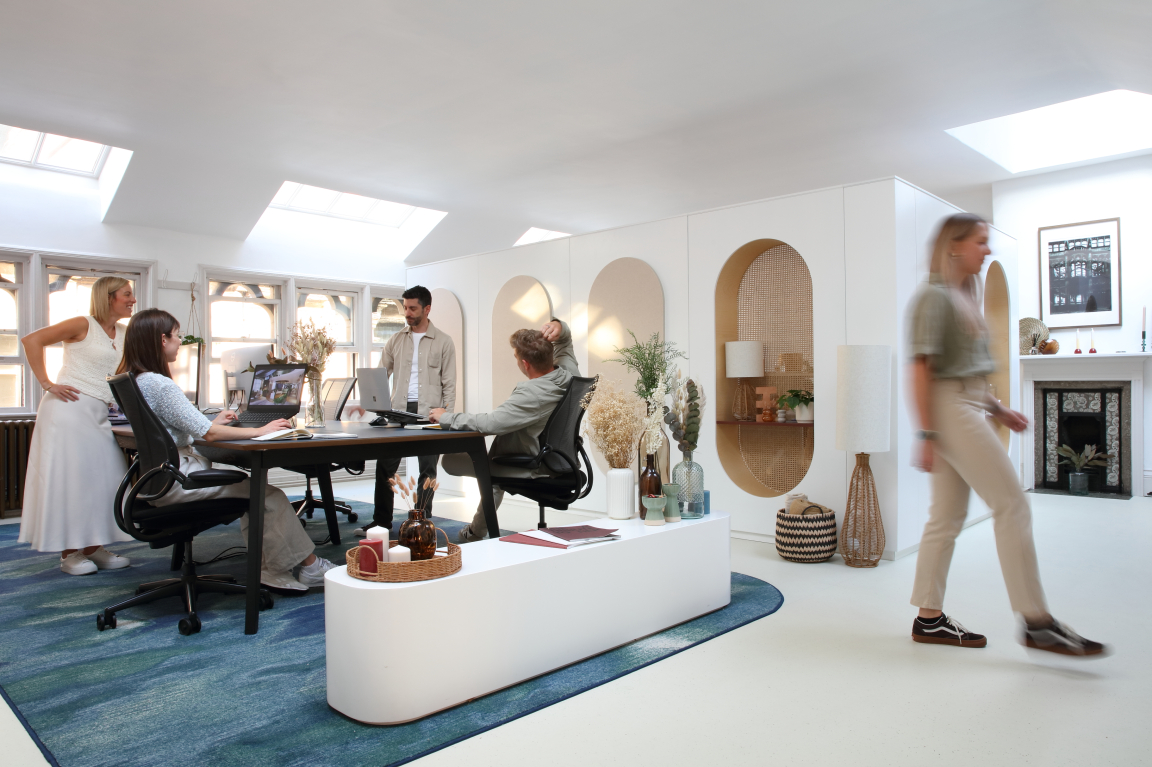
Credit: Pip Rustage
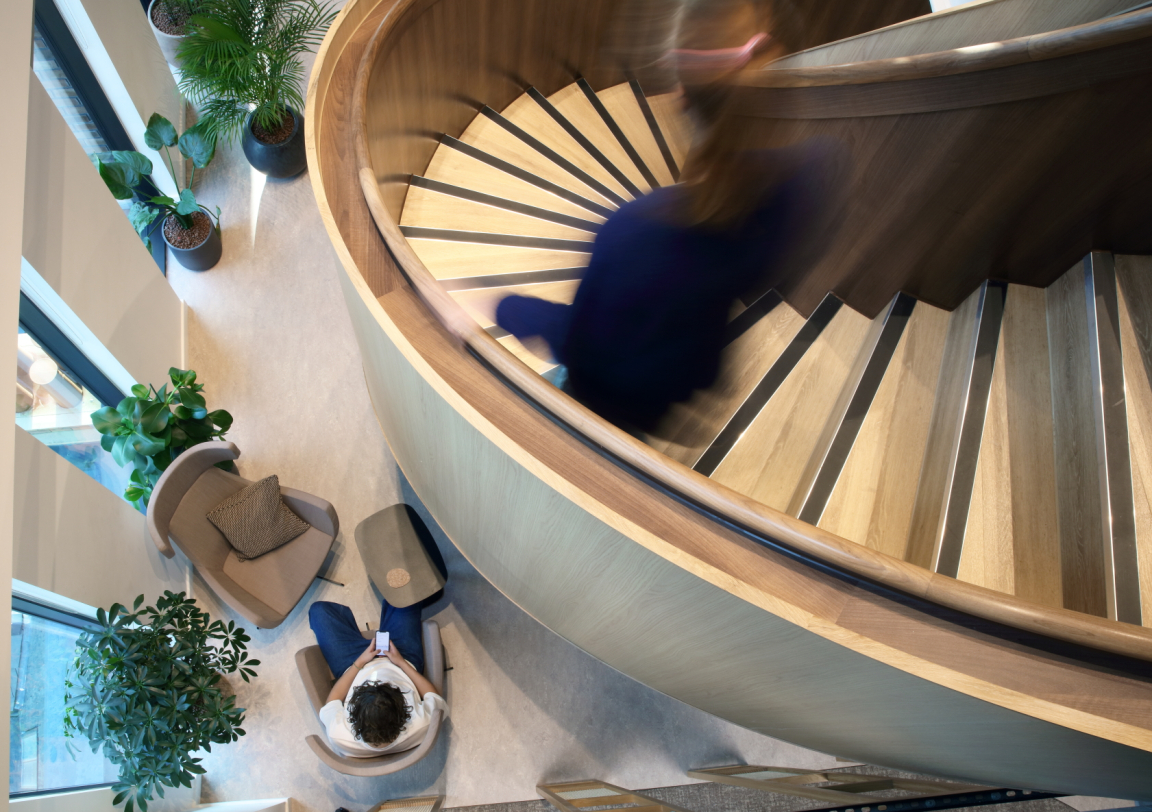
Henry Boot - credit: Pip Rustage
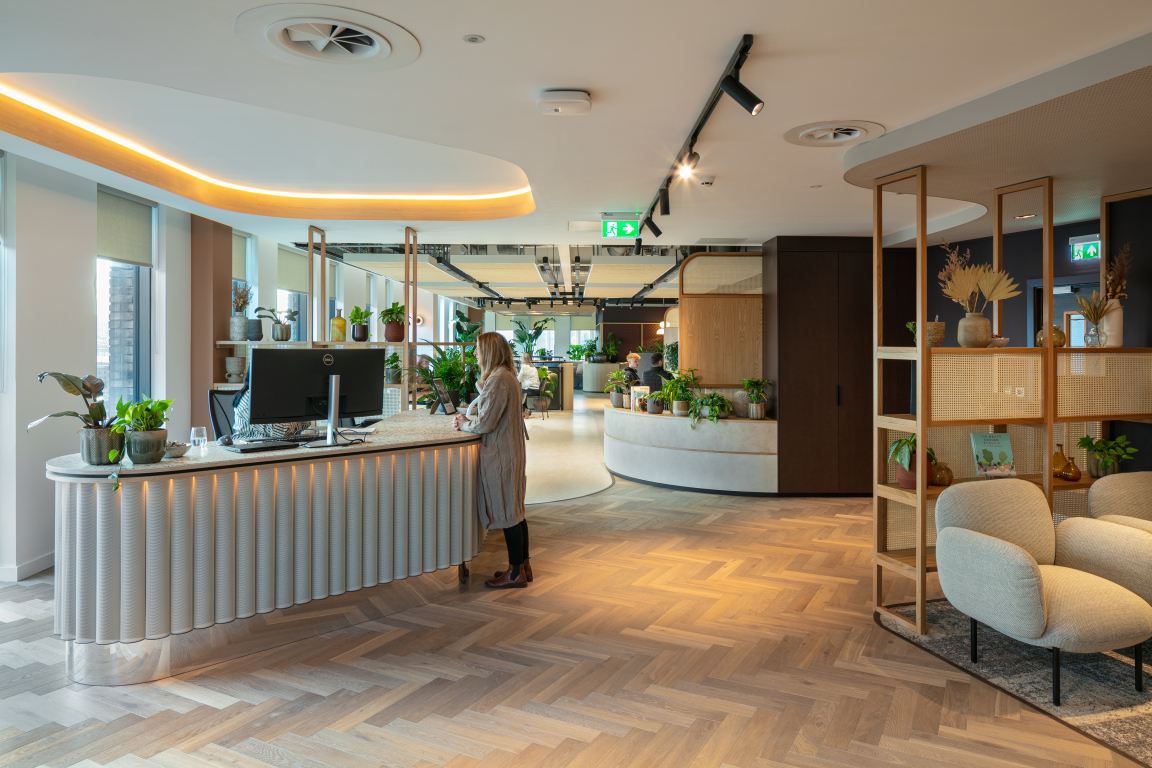
Henry Boot - credit: Mike Dinsdale
Honing in on the ‘now’, Incognito has just moved its HQ to Manchester city centre – what was the drive behind the relocation from Knutsford?
“When Incognito existed as a one-man-band, Knutsford was fine for me because most of my work wasn’t in town. It was global. But as and when team members joined, we needed that connectivity – not always working via hybrid – we were very early adopters of Teams, long before the pandemic. And had people working around the world. In fact, we still do!
“Now the pandemic is behind us, we are almost emotionally done with communication via screens. There’s a level of exhaustion and time commitment with Teams, where everything is an hour or half an hour by default. We were keen to secure a space where we could come together and collaborate. Our lease came to an end, and after consulting with the team we learned they did want a central space.
“We also felt we were perhaps too below the surface, and we needed to be bumping into people on the street occasionally. Which you get in town. I always liked that about the original Police Street office of SpaceInvader, being in the epicentre. So when we found the ideal top-floor suite, with amazing views and natural daylight, the ideal size, and in the historical part of Manchester, it felt perfect.
“We took time to design and develop it exactly how we wanted it, and now we’ve opened up and it works so well. It proves there is still a need to have an office. We’ve 14-people working at the studio, and there are six workstations, so it’s very much hybrid. We trust people. If someone disappears during the day for Sports Day, or they’re opening up the bar at the cricket club – whatever it may be – it’s cool, because I know the deadline will be met.
“The opening of the studio also enables us to employ graduates. When someone comes out of a degree, their learning really begins. And unless you have boots on the ground to take that person under your wing, to allow them to listen to phone calls and interactions, so they can learn their craft over years, it’s impossible.
“So as soon as our new studio was open, we took on our first grad, Lauryn, from Manchester University. There’s always someone in to teach her, we have a supported learning programme – we’ve invested in this area so we can do the same again. And she’s doing great.
“The learning aspect carries through to the whole studio with our monthly Toolbox Talks, where we share not only our successes but the challenges we’ve faced too. Just seeing Richard downstairs from Crown Paints – we know Crown, and we like them, but that’s come from learnings, from using other suppliers and being let down. And that’s why we know as a team we’re happy to stick with them."
There’s a lot of chest-beating in the industry. It’s just as important to celebrate mistakes. And learn from them.
On a roundtable, many years ago, you said you’d be disappointed if after you handed over to the client, the staff hadn’t adapted. Is that still a firm held belief?
“I think it’s the most fundamental thing. When you work on a proper workplace project, which that alludes to, you want to understand where the team is now before the project starts to be designed. This conversation happened long before the pandemic, and I think a lot of people think workplace consultancy only came in after that. But it’s always been about understanding the behaviours, work patterns, and requirements of a workforce from what tools they need to do their job, where’s the culture at and where do the negativities come from, and then working out how you can be part of the cure in terms of shaping the built environment.
“You have so many touch points with peoples’ emotions, and you can make that workplace so much more satisfactory. Truth is, the way I was always taught in practice, was to always consider this as our prime motivation – how can you unlock potential and help someone to work more efficiently and effectively – helping them to feel rewarded and assist them to be a happier individual. And less likely to leave.
Neurodiversity is not a new term for us. Neither is experiential. It’s always been the case. Our tools have improved and it gets more press and clicks, but it's nothing new.
“We are firm believers in taking proper briefs. We don’t just leave it at the preoccupation survey looking at quantitative data, we also look at qualitative data. It’s really important to understand that, then work with HR, real estate, the brand team, while understanding the business objectives, growth plans, and attendance policies. Overcoming the peaks and troughs of Tuesdays, Wednesdays, Thursdays versus the Friday lull. Under-utilised workplaces become toxic. You need a certain level of ambience.
“We also work on the change management front, updating the team on how the design will be, as well as setting out the expectations for moving around the space and the different behaviour expectations for each area, creating soft landings. You take them through that journey. We might even introduce the smell of the new environment into their old environment six-months before they move, so when they walk into the new space, it’s familiar.
“On day one, I sit there as a relatively unknown, with a brew, and I watch peoples’ faces as they come in. It’s almost like that first day of school moment. They’re normally very excited. It’s lovely. But we don’t stop there, we keep looking at how we can improve things. As well as pre occupation studies, we do post occupation. Same set of questions – but we want to see an uplift.
“I would be disappointed if the staff hadn’t adapted, because it would mean we’d not been allowed to do the full works. Part of our team is a former Director of Workplace for a global pharmaceutical company - now a workplace and change consultant. She helps our clients from an insider’s point of view – not an interior designer’s view – who’s lived and breathed it, and done the change management map, and can say, ‘trust me – I’ve done it – and this is what we learned from it.’ That’s really helped our clients.
“We’re now all so aware that a successful environment can be a real force for good. Interior design is not just about ‘colouring in’ or picking materials and samples. We’re dealing with real, pressing issues about our economy. And how we work effectively, efficiently, reduce sick days, minimise waste from a sustainability perspective, and enable growth. That’s interior design.”
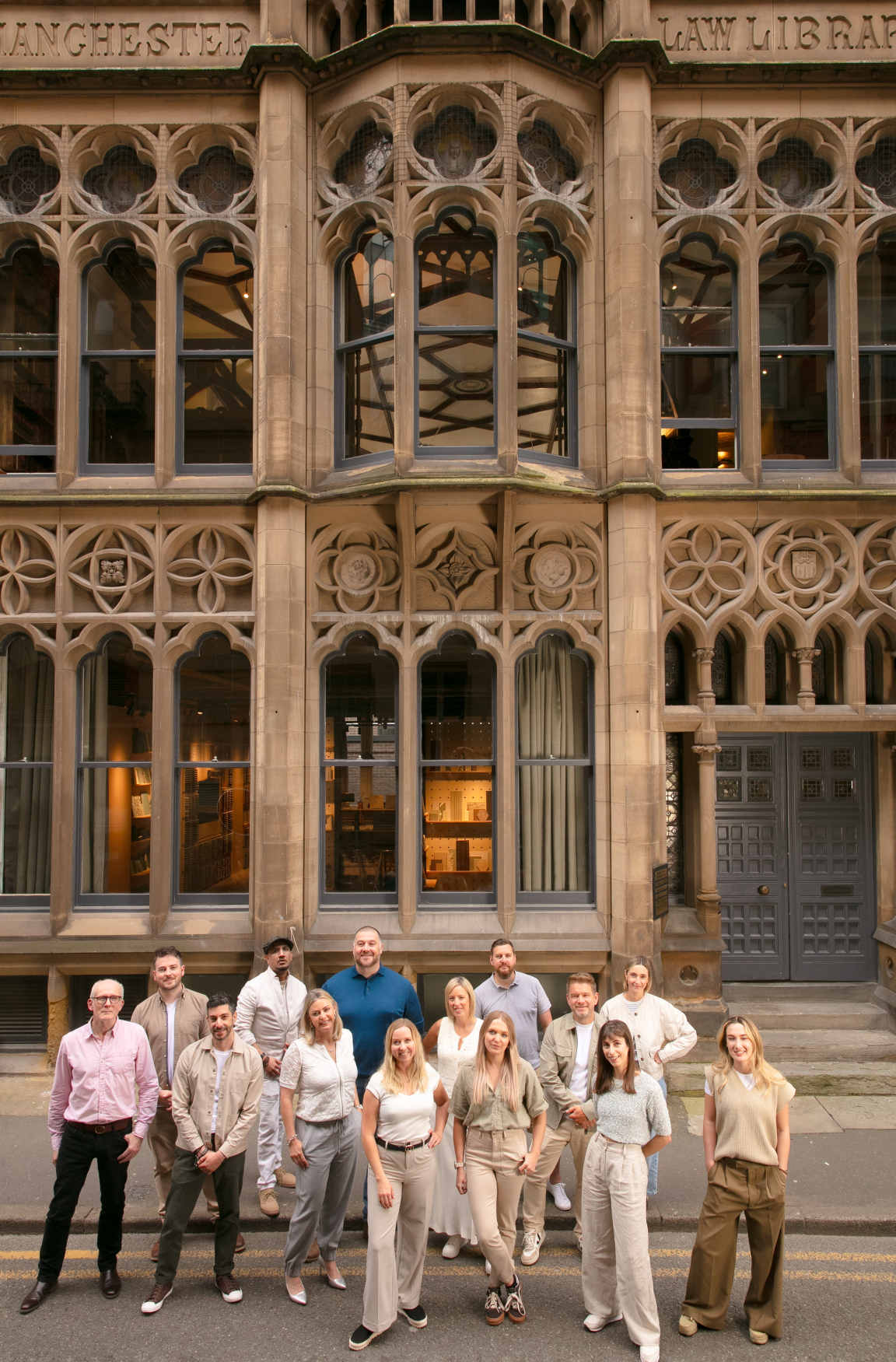
Credit: Pip Rustage
What’s next for Incognito?
“We’ve got a good strong culture based on shared experience to do what we want to do, and where that takes us, I do not know. We have a great, healthy portfolio, but I’m not about to compromise that for arbitrary growth based on BS targets and ego. Nor am I about to call myself the CEO of Incognito...FFS. That’s the honest answer. We're good at what we do. We're humans designing for humans. We want everyone to enjoy what we’re doing and earn good money from it. That’s all members of the team not just myself and Howard. We’re not anti-growth, but we’ll do it when the right opportunity comes to us and when we’re ready. That’s why we’re hard to find. And we’ll only grow if we’ve done a good job.”
As our conversation came to a close, a song played (‘My House’ by ‘Purple Disco Machine’ if you were curious) that took Simon back to an exchange with Howard at Restaurant Bar & Grill where he made a promise during Howard's (then) staff review in 2014 – “He was awesome at his job, I promised him a seat at the table with me as a director, and every time I hear this tune, it reminds me that I made good on that promise. That’s key for me – it might take me a while, it might be a different company, but if you make a promise, you should always follow through on it. But only promise what you can make good on.”


